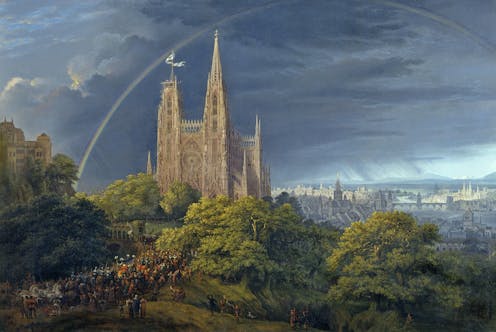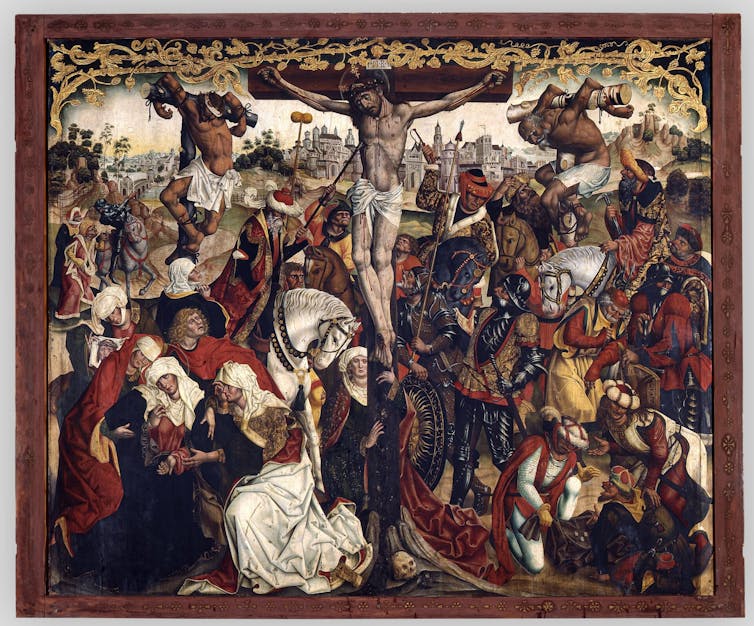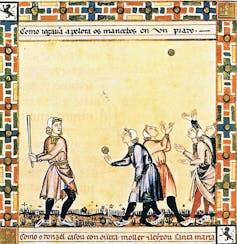
“People have the right to live as they wish, we are no longer in the Middle Ages.” This statement, made recently by Luxembourg’s Minister of Foreign and European Affairs Jean Asselborn in relation to a homophobic law in Hungary, show that medieval is often used as a synonym for uncultured, barbaric and backward.
For example, for years, films and series set in the Middle Ages have portrayed a violent, unjust and superstitious society. And this vision is reinforced by an increasingly dark aesthetic – the sun apparently did not rise much in the Middle Ages. In this sense, The Last Duel, a recent Hollywood blockbuster set in period, is a clichéd example.
To lump 1,000 years of history together seems rather ridiculous. Can you imagine that in the future the time between 1500 and 2500 will be considered just one era – with the same label being applied to all those centuries?
Besides, it is enough to enter a Gothic cathedral to see that the Middle Ages were not just barbaric or dark. Perhaps for this reason, many medievalists have tried to show that this derogatory view of the Middle Ages is difficult to defend. However, little is known about the origin of this conception. Why does the medieval have such a bad reputation?
The valley of the Middle Ages
The first question to be asked is why we consider 1,000 years of history a single epoch, and why we know it as the Middle Ages. It was the German scholar Christopher Cellarius who, at the end of the 17th century, published a book that enshrined the division of history into three ages: Ancient, Middle and Modern, to which the Contemporary would later be added.
Far from being neutral adjectives, these denominations already denoted a genuine vision of history. By being defined as the Middle Ages, the period between the 5th and 15th centuries passed into history as an epoch that’s importance was reduced to being in the middle – hence the name – of two other more important ages.
This view of history could be graphically represented as a landscape dominated by two imposing mountains: the Ancient and the Modern Ages, separated from each other by a valley – the Middle Ages. But when did this derogatory view of the medieval millennium begin, and can a particular time, or even a particular person, be singled out as responsible for this historical conception?
The creator of a dark epoch
The historical context in which the idea of a dark Middle Ages was born is none other than the Italian Renaissance, specifically the 14th century, and the first author to express it in his writings was the famous Francesco Petrarca (Petrarch). The circumstances of this historiographical invention are rich and complex, and in this recently published book, I go into them in depth.
Briefly, we can say that the reason for Petrarch’s contempt for the Middle Ages stems from his longing for ancient Rome. As a great connoisseur of the Latin classics, Petrarch could not help comparing the ruinous situation of the Italy of his time with the glorious Roman era. Such was the Tuscan poet’s disaffection for his own time that, in his letter To Posterity, he remarked: “If love for my own people had not prevented me, I should always have wished to be born in any other age, and to forget this one”.

For Petrarch, the decline of the Roman Empire had ushered in an era characterised by darkness and corruption at all levels: political, religious and, above all, cultural. According to this view, during the Middle Ages the Church was corrupted and the arts and literature entered a dark age which, for Petrarch, still lasted.
In his Epistolae metricae, the great Tuscan poet summed it up thus: “There was a more fortunate age and there will probably be another again; in the middle, in our time, you see the confluence of misfortunes and ignominy”. This phrase perfectly sums up the historiographical conception that still persists today: a golden Ancient Age, a dark Middle Ages and a Modern Age that was to bring about the recovery of culture, i.e. its renaissance.
The Promised Land: the Renaissance
We return to the importance of words: something cannot be reborn if it was not already dead. The very term Renaissance, which, like the Middle Ages, was coined a little later, carries with it the implicit assertion that during the Middle Ages culture was dead.
It is clear from Petrarch’s quotations that he saw himself in the Middle Ages. Like a new Moses, the Tuscan poet foresaw the coming of the promised land of the Renaissance, but it was his successors within Italian humanism who proclaimed the arrival of the new golden age.
The first to speak of a revival in the field of letters and the arts were great humanists of the 14th century. Prominent among them was the famous Giovanni Boccaccio, Petrarch’s favourite disciple. Subsequently, during the Quattrocento and the Cinquecento, numerous authors in the field of arts and letters proclaimed the rebirth of culture, which had risen from its medieval ashes to constitute a new golden age.
The myth extends to the present day

This historiographical view spread rapidly through Europe. It was first of all the Lutheran Reformation that embraced this idea, especially because of the criticism of the medieval Church it contained, and spread it virally thanks to the printing press.
Subsequently, the French Enlightenment took up this historical conception. For authors such as Voltaire, the Middle Ages represented all the secular errors that they were trying to save mankind from, such as religious obscurantism and the predominance of dogma over reason.
Since then, the only period in which the medieval era was reclaimed was Romanticism, albeit in an idyllic manner. The representatives of this movement recreated a time full of mystery, wonder and folklore. The paintings of Caspar David Friedrich or the novels of Sir Walter Scott represent very well this Middle Ages of castles, exploits and duels between knights for the love of a lady.
Obviously, neither of the two visions, the Renaissance nor the Romantic, do justice to what the so-called medieval centuries were. The Middle Ages, like all historical epochs – like our own – was a time of light and shadow. A time, in short, which, if we approach it without prejudice, still has many lessons to offer us.
Eduardo Baura García no recibe salario, ni ejerce labores de consultoría, ni posee acciones, ni recibe financiación de ninguna compañía u organización que pueda obtener beneficio de este artículo, y ha declarado carecer de vínculos relevantes más allá del cargo académico citado.
This article was originally published on The Conversation. Read the original article.







